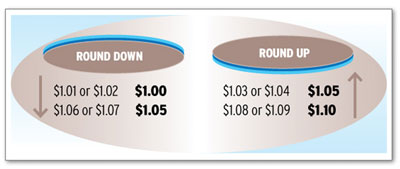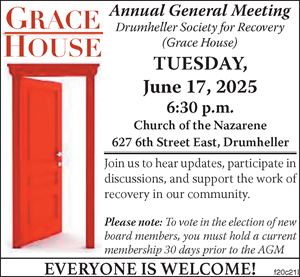 The Canadian penny is about to become extinct, and already some businesses are changing their practices in anticipation of its demise.
The Canadian penny is about to become extinct, and already some businesses are changing their practices in anticipation of its demise.
Last year the federal government announced in its Economic Action Plan that it would phase out the copper coin. For consumers, the coin creates weight in the pocket for very little value. For the government, it costs more to produce a penny than its face value. By eliminating the penny, the government anticipates saving an average of $11 million per year.
The last penny was minted last May, and February 4 is a big date in this process. This is the day the Royal Canadian Mint will no longer distribute pennies.
The Drumheller Co-op is ready for the transition. For the last couple of weeks, it has had a flyer at its tills informing consumers the store will discontinue the use of the penny this coming Monday, February 4 and follow the federal government rounding guidelines.
Co-op general manager Gordon Van Kannel anticipates a smooth transition.
“I think is probably going to be a good thing overall. People are getting tired of handling those extra coins in their pockets or purses, and I think the rounding overall is going to balance out,” said Van Kannel.
He said the biggest change for the store will be adjusting the tills.
“Some of our systems have been changed, some are in the works to be changed,” said Van Kannel, adding that some will not be changed, and cashiers will simply have to round off the numbers.
The federal government has published its simple penny rounding guidelines. They recommend rounding to the nearest 5-cent increments. For example, an item costing $1.02 would simply be rounded to an even $1. An item costing $1.03 would be rounded to $1.05. An item that costs $1.07 would be rounded down to $1.05 and an item costing $1.08 would be rounded up to $1.10.

The rounding is only in the case of cash transactions. Those using cheques or electronic transactions, such as debit or credit cards do not need to round the numbers.
Van Kannel said, while they are discontinuing the coin, it is still legal tender, and while the Co-op will be rounding prices to the nearest nickel, the penny is still currency and the store will continue to accept the penny.
“We are going to continue to see pennies, they are not going to disappear overnight. They are still a form of currency, people can use them,” said Van Kannel.
Some charities are looking at the change as a time to help people unload the copper pennies. The Morgan Jayne Project is launching “Cents to Save Lives,” giving residents the option to donate their pennies to the project to purchase formula.

 Big changes are in the works for the Drumheller Gymnastics Club.
Big changes are in the works for the Drumheller Gymnastics Club. While Starland County has built a bit of a reputation for innovation with solar power, some of its residents are also getting in the act.
While Starland County has built a bit of a reputation for innovation with solar power, some of its residents are also getting in the act.



















